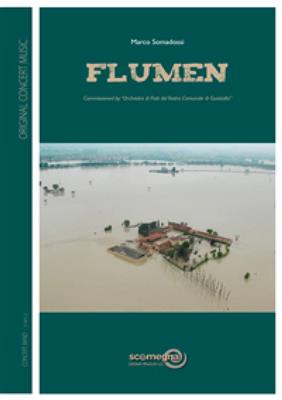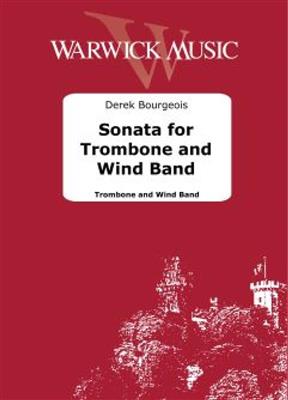Results
-
 £87.40
£87.40Lord of Seven Seas - Kees Vlak
The plot of this overture takes place in the year 3000 A.D. At that time traffic between the earth and the planets relies exclusively on space flights. War as a last resort to "settle" arguments between people on earth no longer exists. There is only one gigantic spacecraft which is able to navigate both above and beneath the surface that supervises the oceans. This vessel, the "Lord of Seven Seas", is a hundred times larger than the "Nautilus" or the "Titanic" and must not be compared to any ship of our times. In the introduction of the overture, the gigantic vessel is presented by employing a musical style which is commonly associated with space flights. The introduction isfollowed by a fragment, which evokes the wild fury of rain and storm, and therefore reminds us of the story of the "Flying Dutchman". The middle section is written as a barcarole. The vessel investigates the local fauna in the depths of the Arctic Ocean. People on board enjoy the calmness as well as the variety and beauty of the animals. In the final part, the gigantic vessel emerges from below the surface and climbs to high altitudes flying from one ocean to the other. The magnificent finale portrays once again the incomparable sight which is offered by the impressive "Lord of Seven Seas".
Estimated dispatch 7-14 working days
-
 £51.60
£51.60Sakura Variations - Kees Vlak
The blooming of the cherry trees each spring is a great event in Japan. In the evening friends meet under the pink and white cherry blossoms for a picnic. It is a striking sight, especially in big cities. Vendors sell Japanese food, entertainers andclowns perform, and the typically cautious Japanese seem to be more relaxed during the cherry blossom, or "Sakura". Kees Vlak captured this atmosphere with his "Sakura Variation"; its theme employs a subtle drum rhythm. The first variation is titled"clowns" and opens with three bass drum strikes. The theme appears in 3/4 time and is repeated several times with surprising changes. An impetuous tempo with dissonant elements suggests a clown's mischievous behaviour. The second variation in a minormode sounds very sad and dramatic. Is this the sadness when thinking of the end of the cherry blossom, as all the petals "snow" down from the trees? The cherry trees will bloom again next year, so the finale celebrates a joyful "Sakura".
Estimated dispatch 7-14 working days
-
 £228.70
£228.70Celebration for Band - John Brakstad
Many Norwegian bands have grown up around factories, but Norwegian factories are often located in the countrysides - by a fjord or lake, by a river or waterfall that provided power for the factory. The factory was the foundation for the existence of the community, but it was also essential for the community's cultural life, choirs, bands etc. (cp. British brass bands and mining). "Celebration for band" tries to give a picture of the environment and life around a band like this, with both factory noise and the natural world (Pastorale), as well as the challenges and development of the band itself. The composition is built up of five connected episodes: - Fanfare and Prologue (concludes with a feeling of the untamed power of the river) - Pastorale I: " At the river" - Intermezzo: " The Factory" (starts with the opening of water for the turbines: snare drum. Factory whistle and bell call to work, and the spinning and weaving machinery starts up.) - Pastorale II: " Summer evening on the fjord." - Finale: " Challenge and Progress"
Estimated dispatch 7-14 working days
-
 £127.30
£127.30Prinsessen p (fj)erten - Haakon Esplo
In this little suite in three movements, your young musicians really can be creative and have fun.Of course, a story must be written about the unfortunate princess who ate pea soup and got to let a small fart. Maybe one or more should dress up and play the princess and other roles? And who will be the lucky one who gets the honourable assignment to be a soloist on a fart cushion - probably for the first time in the history of your band? Maybe all the musicians should have one each?Think what a great finale at the last movement that could be.Good luck!
Estimated dispatch 7-14 working days
-
 £174.10
£174.10Nde - Iver Kleive
This is the finale from the original soundtrack of the opening ceremony of the XVII Olympic Winter Games in Lillehammer, Norway, 1994. The piece was composed by Knut Reiersrud, Iver Kleive and Marilyn Mazur. It features them all as musicians; Marilyn Mazur (percussion), Knut Reiersrud (guitar) and Iver Kleive (organ) together with Linda vreb - vocals, Odd Lund - piccolo trumpet, Kjell Erik Arnesen - French horn and The Boys Choir of Oslo Cathedral.Performance notes:The horns should be standing close to the organ.To get the desired effect from the "Solo percussion"-part, please listen to the original recording of this piece Nde recorded by Kleive/ Reiersrud/ Mazur at the Kirkelig Kulturverksted label.
Estimated dispatch 7-14 working days
-
 £77.90
£77.90La matita di leonardo - Luciano Feliciani
2019 coincided with the 500-year anniversary of the death of Leonardo Da Vinci, one of the greatest men of genius in history, a universal genius who was a scientist, philosopher, architect, painter, musician, engineer, anatomist, botanist, designer, and planner. This composition entitled La Matita di Leonardo (Leonardo's Pencil), represents an ideal journey into the mind of the Tuscan genius: in the first part of the piece, percussion instruments underline the ticking of the passage of time that anticipates the birth of the idea, while short thematic cells in various instruments alternate, drawing the rhythmic melodic line. On this background, we hear the main theme entrusted to the dark tones of trombone and euphonium. The music proceeds with a growing pace and an adventurous character to represent the genesis of Leonardo's machines, which are in fact the result of the drawings of his pencil. In the second, more animated part, a new theme is introduced, varied, and elaborated, thus giving life to a vigorous movement meant to describe the drawings that come to life, leaving the pages of Leonardo's codes. In the coda the two themes overlap, transporting the listener towards a resolute and rhythmically energetic conclusion in an enthralling and engaging finale.
Estimated dispatch 7-14 working days
-
 £113.30
£113.30Cerimonial Ouverture - Lorenzo Pusceddu
This work is characterised by the strong presence of the brass section. Already in the introduction, a sombre pedal is followed by a dialogue between the trumpets and horns that augments as we are conducted to the luminous entrance of the entire band. The brass section, with the vital support of the percussion instruments, also dominates the subsequent movement. The central part is in decided contrast to the rest of the work;the woodwind section becomes the key protagonist of the scene, with sweet melodies and delicate, harmonious embellishments. The initial atmosphere then returns, with the former hierarchy re-established and the unequivocal finale features a powerful cord played by the brass section alone.
Estimated dispatch 7-14 working days
-
 £126.50
£126.50Expansion - Claudio Dorigato
This piece features two themes: one is slow and contemplative, the other is quicker and more rhythmic. The themes are repeated and rearranged several times in a combination of different harmonies and sound mixtures. Both arising out of one phrase, the two themes have been developed in a number of ways using modality as a language. Tiny fragments of the theme introduce and link the various moments. These fragments, repeated using different rhythms and combinations, lead to a finale where the melodic and harmonic elements come closer, continuously imitating each other and becoming more and more similar, until everything overlaps in different scales.
Estimated dispatch 7-14 working days
-
 £157.50
£157.50Flumen - Marco Somadossi
In October 2000, the River Po produced its highest flood waters in the last hundred years, provoking a natural disaster of dramatic dimensions. To the thousands of valiant men and women committed to defending their villages against the threat of the flood is dedicated the symphonic poem entitled "Flumen" (river, in Latin), inspired by the thematic material in the Gregorian sequence, "Victimae paschali laudes". The main melody is elaborated and its essence is transfigured in an alchemy of modern sounds from which, at times, archaic echoes emerge. The composition is structured in two parts: the first ("The River") is sullen and menacing, with sounds that portray the turbulent water and the inexorable and frightening rise of the flood;this contrasts with a second section ("The People"), with its primitive rhythms and vaguely multiethnic character (expressed through modal harmonies). Here the work evokes man's ancestral struggle against the forces of nature: the strenuous defence of the Po riverside communities to against the threat of flooding. In the finale, the two themes interweave and overlap, re-establishing a symbolic and primordial equilibrium where man and nature are again in harmony with each other.
Estimated dispatch 7-14 working days
-
 £75.00
£75.00Sonata - Derek Bourgeois
This work, composed in 1998, was commissioned by the American trombonist Don Lucas as a work for trombone and piano and first performed by him in Birmingham on 19th May 2000. Subsequently, I arranged the music for both solo trombone and brass band and solo trombone and wind band so that it now exists in three formats. The first movement, in B flat major, is brisk and energetic, and is cast in sonata form. The second subject is gentler and more lyrical. The second movement, a scherzo in C major, is the most complex of the four. Basically the structure is a rond. For a long time the music remains in the opening 5/8 time until a new theme introduces more broken rhythms in a more jazzy idiom. After a return of the opening theme the following episode is more tonally ambiguous. Finally, the main theme returns to round off the movement. The third movement, a lyrical adagio, is really one long extended melodic flow. The harmonies are lush and the textures simple and direct. The tonal center is A minor, but the music meanders through so many keys, that this key centre is heavily disguised. The finale is a fiery affair. G minor is really its home key, but throughout the movement the music moves about a lot and the second subject is first heard in A flat minor. The movement's underlying sonata structure is masked not only by its loose tonality but also by its frequently changing time signatures. Like the first movement the second subject is more lyrical in nature and for a while it seems that the music will end peacefully, but a final flurry heralds a triple forte unison on the home note of the first movement - B flat. Derek Bourgeois
Estimated dispatch 7-14 working days
